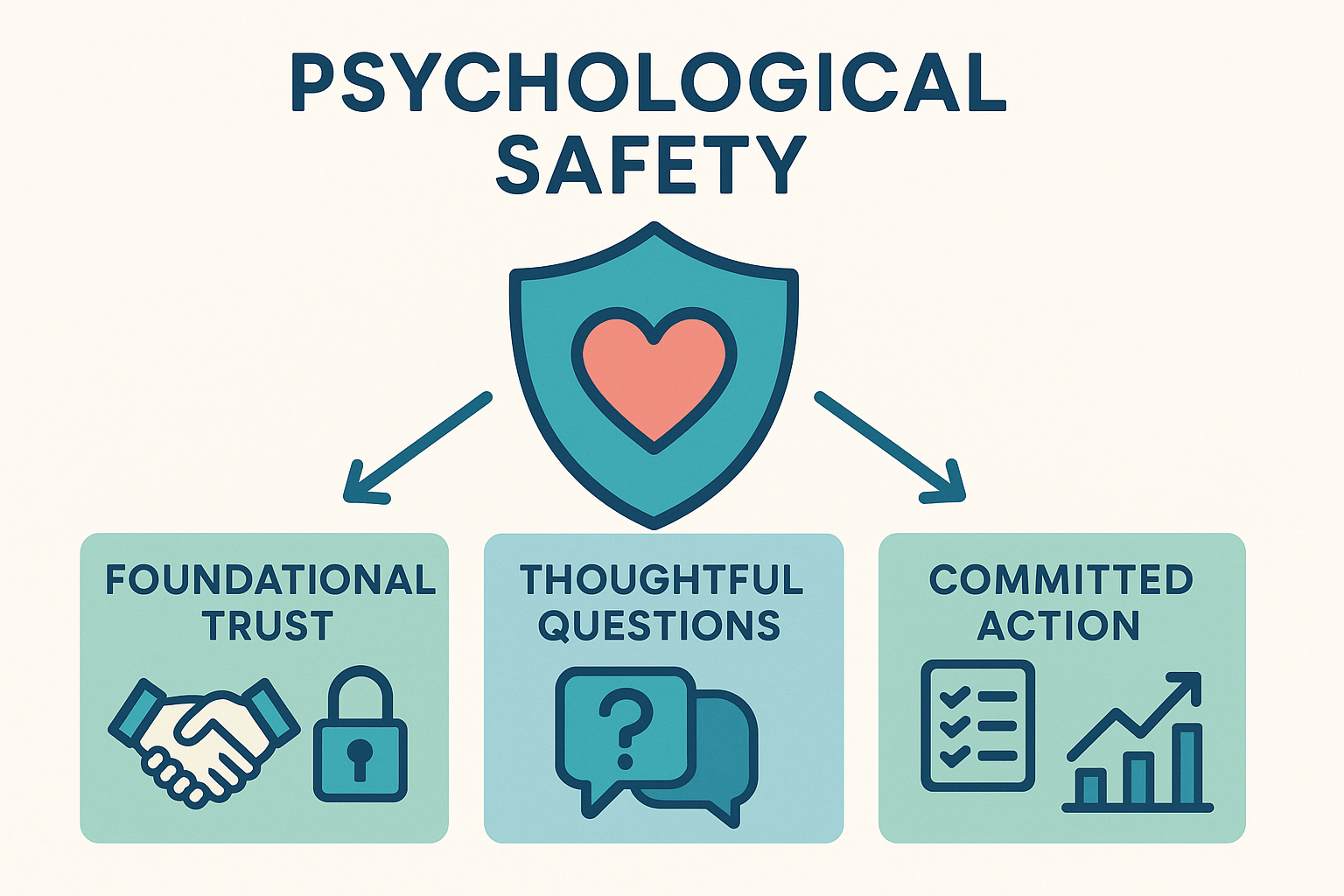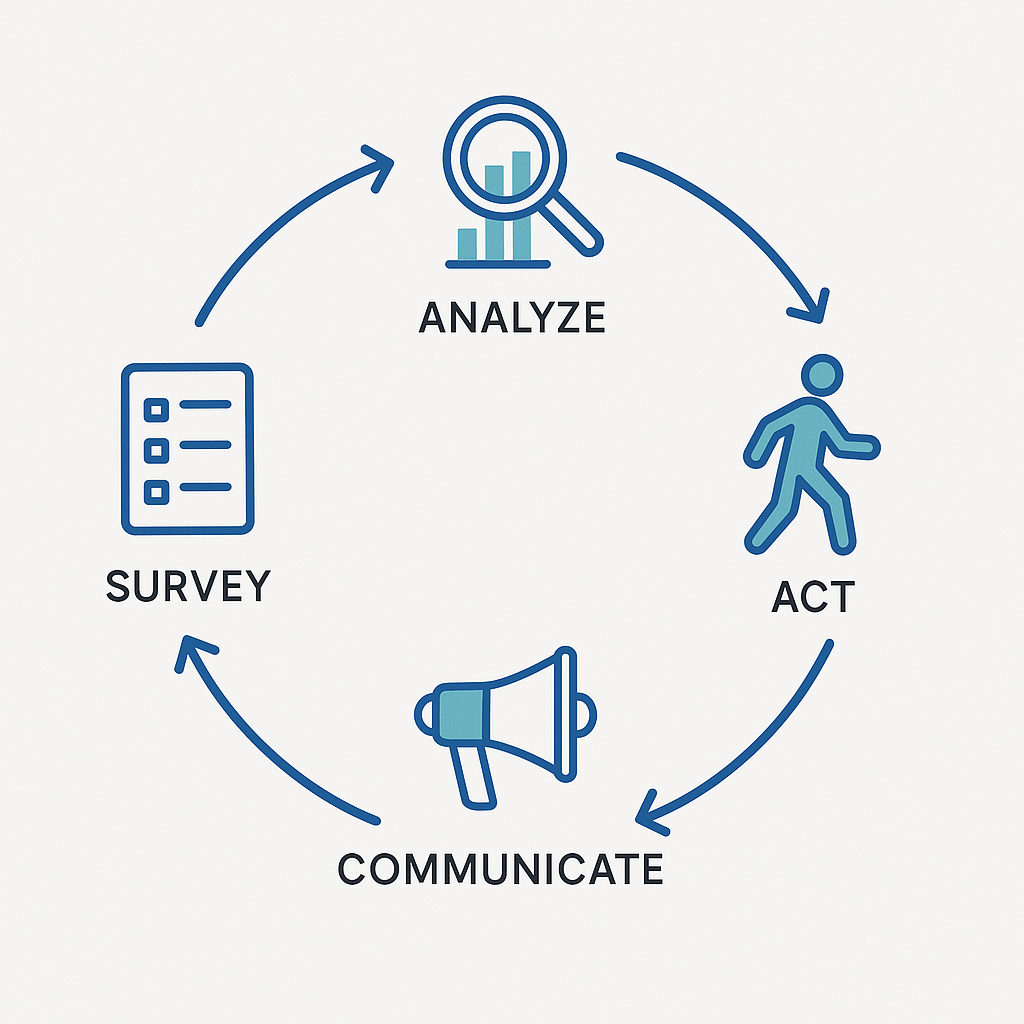Creating Mental Health Surveys That Build Trust
Talking about mental health at work is hard. Asking about it is even harder. Most companies mean well when they decide to run an employee mental health survey, but good intentions don't guarantee good outcomes. The road to a toxic culture is paved with poorly executed surveys that erode trust rather than build it.
The problem is that most surveys feel clinical, impersonal, and, worst of all, unsafe. Employees worry, "Who will see this? Will my honest feedback affect my career?" According to the World Health Organization, an estimated 12 billion working days are lost every year to depression and anxiety at a cost of US$ 1 trillion per year in lost productivity. This isn't a niche issue; it's a critical business metric.
At FormLink.ai, we've spent a lot of time thinking about how to ask difficult questions. We built our platform because we believe the way you ask is just as important as what you ask. This guide is our no-nonsense approach to running a mental health survey that fosters psychological safety, delivers real insights, and helps you build a support system that works. We'll show you how to move beyond performative check-ins and create a feedback loop that your team can actually trust.
Table of Contents
- Why Most Mental Health Surveys Fail
- Part 1: The Foundation: Building Psychological Safety
- Part 2: Crafting Your Survey: Asking the Right Questions
- Part 3: The Right Way to Administer the Survey
- Part 4: From Data to Action: The Only Step That Matters
Why Most Mental Health Surveys Fail
Before we build, let's look at the common pitfalls. Many mental health surveys fail for three predictable reasons:
- Lack of Trust: Employees are smart. They can spot a corporate checkbox exercise from a mile away. If they suspect their answers aren't truly anonymous or that their vulnerability could be used against them, they'll give you generic, safe answers. The data becomes useless.
- Fear of Inaction: Even worse than a bad survey is a good survey that leads to nothing. When employees pour their hearts out and are met with silence, you haven't just wasted their time—you've actively damaged morale. You've shown them that their feedback doesn't matter.
- Wrong Questions, Wrong Format: Using clunky, impersonal tools with leading or poorly phrased questions can make the experience feel like an interrogation. The format itself can discourage honest participation.
The rest of this guide is designed to help you avoid these exact traps.

Part 1: The Foundation: Building Psychological Safety
You cannot get honest feedback without first creating an environment of trust. This isn't a soft skill; it's the fundamental prerequisite for collecting any meaningful data on sensitive topics.
1. Communicate the "Why" with Radical Transparency
Don't just send a link with the subject "Please take this survey." You need to launch an internal communications campaign first.
- Be Explicit About the Goal: Tell your team why you're doing this. For example: "We want to better understand the stressors our team is facing so we can invest in the right resources and support systems. Our goal is to make this a healthier, more sustainable place to work."
- Acknowledge the Sensitivity: Address the elephant in the room. Say, "We know that this is a sensitive topic, and we appreciate your trust. Your well-being is more important than any productivity metric."
- Get Leadership to Champion It: The announcement should come from the highest level of leadership possible. A message from the CEO or a founder carries more weight than one from an anonymous HR alias. It signals that the entire company is taking this seriously.
2. Guarantee Anonymity (and Prove It)
Saying a survey is anonymous isn't enough. You have to prove it. As engineers and product people, we know that technical details matter.
- Explain the Mechanism: Be clear about how you're ensuring anonymity. For example: "We are using a third-party tool that does not track personal identifiers. We will only receive aggregated, anonymized data. We will not be able to see individual responses, and we have set the minimum response threshold to 10 people per department to ensure no single person can be identified."
- Use a Trusted Tool: This is where the tool itself matters. Using a platform known for its privacy focus helps. This is a core reason we advocate for conversational interfaces; a chat-based survey feels more like a private conversation than filling out a sterile, corporate form.
3. Commit to Action Before You Ask
The single most important thing you can do to build trust is to commit to sharing the results and taking action before you even send the survey.
State it publicly: "After the survey closes, we will share a summary of the anonymized findings with the entire company within two weeks. Following that, we will work with a team of volunteers to develop a concrete action plan based on your feedback."
This creates accountability and shows the team this isn't just an exercise in data collection.

Part 2: Crafting Your Survey: Asking the Right Questions
The quality of your insights is determined by the quality of your questions. Avoid generic, leading, or overly complex questions. The goal is to create a set of anonymous employee mental health survey questions that are clear, respectful, and actionable.
A good survey uses a mix of question types:
- Likert Scale: "On a scale of 1-5 (Strongly Disagree to Strongly Agree), how do you rate the following..." These are great for quantitative data.
- Open-Ended: "What is one thing we could do to better support your well-being?" This is where you'll get your most powerful, qualitative insights.
Here are some categories and sample questions to guide you.
Workload & Stress
- (Scale) My workload is manageable.
- (Scale) I feel pressure to work outside of my regular hours.
- (Open-Ended) What is the biggest source of stress for you in your role right now?
Leadership & Support
- (Scale) I feel that my direct manager genuinely cares about my well-being.
- (Scale) I feel comfortable raising concerns with my manager without fear of negative consequences.
- (Open-Ended) What could leadership do to make you feel more supported?
Psychological Safety
- (Scale) I feel safe to take risks and be vulnerable in front of my team.
- (Scale) "Failure" is treated as a learning opportunity on my team.
- (Scale) I feel respected and valued for who I am at work.
Resources & Benefits
- (Scale) I am aware of the mental health resources and benefits available to me.
- (Scale) The company's benefits adequately support my mental health needs.
- (Open-Ended) Are there any specific resources or benefits you wish the company offered?
Pro-Tip: Frame questions neutrally.
- Avoid: "Don't you agree that the new wellness program is great?"
- Instead: "How helpful have you found the new wellness program?"
Part 3: The Right Way to Administer the Survey
How you deploy the survey is critical to participation and honesty.
- Choose the Right Tool: Stop using clunky, intimidating spreadsheets or legacy survey software. The experience feels cold and bureaucratic. A tool like FormLink.ai's AI forms uses a conversational approach. Asking questions one by one in a chat interface is less overwhelming and feels more human, which is exactly what you need for a sensitive topic like this. It's the difference between a conversation and an interrogation.
- Timing is Everything: Don't send the survey during a major deadline, a holiday week, or right after a round of layoffs. Send it during a relatively normal work week and give people at least 7-10 days to respond. Send one or two gentle reminders, but don't hound people.
- Set the Scene: The email or message containing the survey link should reiterate the "Why," the anonymity guarantee, and the commitment to action.

Part 4: From Data to Action: The Only Step That Matters
Collecting data is easy. Turning it into meaningful change is the hard part. This is where you earn trust for the future.
1. Analyze the Results (Both Kinds)
- Quantitative (The "What"): Look at the scale-based questions. What are the overall scores? Which departments are scoring lower on certain topics? This tells you what the problem areas are.
- Qualitative (The "Why"): This is your goldmine. Read every single open-ended comment. Look for recurring themes and direct quotes that illustrate the quantitative data. This tells you why the problems exist.
2. Share the Findings (The Good, The Bad, and The Ugly)
This is the moment of truth. You must share the results with the company.
- Summarize Key Themes: Present the aggregated data and key themes. Be honest about the areas where you're falling short. For example: "The data shows that while many of you feel supported by your direct managers, a significant portion of the team feels our overall workload is unsustainable."
- Use Anonymized Quotes: Sharing powerful, anonymous quotes can bring the data to life in a way numbers can't. "I'm afraid to take a sick day because I don't want my team to fall behind."
- Reiterate Your Commitment: Thank the team for their honesty and restate your commitment to taking action.
3. Create a Public Action Plan
Don't deliberate behind closed doors. Form a volunteer working group with representatives from different departments to create an action plan.
- Focus on 2-3 Key Initiatives: You can't fix everything at once. Pick the most critical areas from the survey and create specific, measurable, achievable, relevant, and time-bound (SMART) goals.
- Assign Ownership: Every action item needs a clear owner and a deadline.
- Provide Regular Updates: Report on your progress quarterly. Show the team that their feedback didn't disappear into a void.
Conclusion: It's a Marathon, Not a Sprint
Running a successful employee mental health survey isn't a one-time project; it's the start of an ongoing conversation. The goal isn't to achieve a perfect score. The goal is to demonstrate that you're listening, that you care, and that you're willing to do the hard work to improve.
By building a foundation of psychological safety, asking thoughtful questions, and, most importantly, taking concrete action, you can transform your survey from a corporate mandate into a powerful catalyst for positive change. You show your team that their well-being is a priority, not an afterthought.